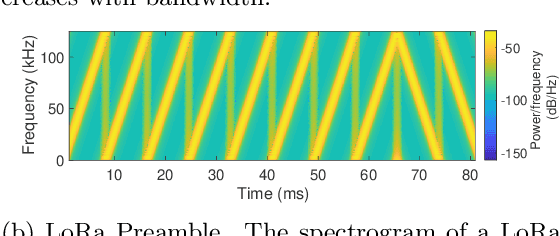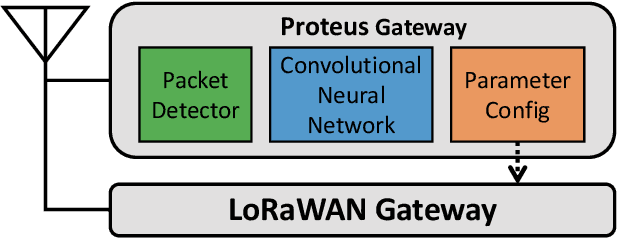Zerina Kapetanovic
HyperCam: Low-Power Onboard Computer Vision for IoT Cameras
Jan 17, 2025Abstract:We present HyperCam, an energy-efficient image classification pipeline that enables computer vision tasks onboard low-power IoT camera systems. HyperCam leverages hyperdimensional computing to perform training and inference efficiently on low-power microcontrollers. We implement a low-power wireless camera platform using off-the-shelf hardware and demonstrate that HyperCam can achieve an accuracy of 93.60%, 84.06%, 92.98%, and 72.79% for MNIST, Fashion-MNIST, Face Detection, and Face Identification tasks, respectively, while significantly outperforming other classifiers in resource efficiency. Specifically, it delivers inference latency of 0.08-0.27s while using 42.91-63.00KB flash memory and 22.25KB RAM at peak. Among other machine learning classifiers such as SVM, xgBoost, MicroNets, MobileNetV3, and MCUNetV3, HyperCam is the only classifier that achieves competitive accuracy while maintaining competitive memory footprint and inference latency that meets the resource requirements of low-power camera systems.
Long-Range Backscatter Connectivity via Spaceborne Synthetic Aperture Radar
Feb 15, 2024



Abstract:SarComms is a new communication method that enables passive satellite backscatter connectivity using existing spaceborne synthetic aperture radar (SAR) signals. We demonstrate that SAR signals from the European Space Agency's Sentinel-1 satellite, used for imaging the Earth, can also be leveraged to enable ground-to-satellite connectivity. This paper presents the first cooperative, on-the-ground target that modulates SAR backscatter to send information bits and analyzes how to extract it from publicly available Sentinel-1 datasets. To demonstrate the system's feasibility, we evaluate the effectiveness of corner reflectors in the field, develop a deployment algorithm to optimize reflector placement and prototype modulating corner reflectors (both mechanically and electrically controlled) to change the amplitude of backscattered SAR signals.
Affordable Artificial Intelligence -- Augmenting Farmer Knowledge with AI
Mar 04, 2023Abstract:Farms produce hundreds of thousands of data points on the ground daily. Farming technique which combines farming practices with the insights uncovered in these data points using AI technology is called precision farming. Precision farming technology augments and extends farmers' deep knowledge about their land, making production more sustainable and profitable. As part of the larger effort at Microsoft for empowering agricultural labor force to be more productive and sustainable, this paper presents the AI technology for predicting micro-climate conditions on the farm. This article is a chapter in publication by Food and Agriculture Organization of the United Nations and International Telecommunication Union Bangkok, 2021. This publication on artificial intelligence (AI) for agriculture is the fifth in the E-agriculture in Action series, launched in 2016 and jointly produced by FAO and ITU. It aims to raise awareness about existing AI applications in agriculture and to inspire stakeholders to develop and replicate the new ones. Improvement of capacity and tools for capturing and processing data and substantial advances in the field of machine learning open new horizons for data-driven solutions that can support decision-making, facilitate supervision and monitoring, improve the timeliness and effectiveness of safety measures (e.g. use of pesticides), and support automation of many resource-consuming tasks in agriculture. This publication presents the reader with a collection of informative applications highlighting various ways AI is used in agriculture and offering valuable insights on the implementation process, success factors, and lessons learnt.
Communication by means of Modulated Johnson Noise
Nov 16, 2021

Abstract:We present the design of a new passive communication method that does not rely on ambient or generated RF sources. Instead, we exploit the Johnson (thermal) noise generated by a resistor to transmit information bits wirelessly. By switching the load connected to an antenna between a resistor and open circuit, we can achieve data rates of up to 26bps and distances of up to 7.3 meters. This communication method is orders of magnitude less power consuming than conventional communication schemes and presents the opportunity to enable wireless communication in areas with a complete lack of connectivity.
No Size Fits All: Automated Radio Configuration for LPWANs
Sep 10, 2021



Abstract:Low power long-range networks like LoRa have become increasingly mainstream for Internet of Things deployments. Given the versatility of applications that these protocols enable, they support many data rates and bandwidths. Yet, for a given network that supports hundreds of devices over multiple miles, the network operator typically needs to specify the same configuration or among a small subset of configurations for all the client devices to communicate with the gateway. This one-size-fits-all approach is highly inefficient in large networks. We propose an alternative approach -- we allow network devices to transmit at any data rate they choose. The gateway uses the first few symbols in the preamble to classify the correct data rate, switches its configuration, and then decodes the data. Our design leverages the inherent asymmetry in outdoor IoT deployments where the clients are power-starved and resource-constrained, but the gateway is not. Our gateway design, Proteus, runs a neural network architecture and is backward compatible with existing LoRa protocols. Our experiments reveal that Proteus can identify the correct configuration with over 97% accuracy in both indoor and outdoor deployments. Our network architecture leads to a 3.8 to 11 times increase in throughput for our LoRa testbed.
 Add to Chrome
Add to Chrome Add to Firefox
Add to Firefox Add to Edge
Add to Edge